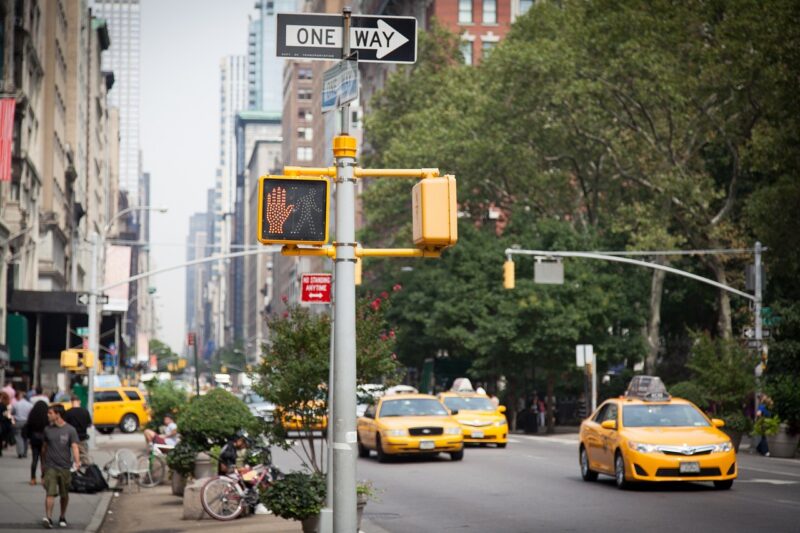The History of Taxis and Why Ride-Hailing Services Are Transforming Transit
November 11, 2024

Taxis have been a critical part of urban transport for over a century. From horse-drawn carriages in the 17th century to self-driving cars today, the evolution of taxis is both fascinating and intricate. With the advent of technology, taxi services have transformed into ride-hailing applications, which have redefined how we view transportation. In this article, we’ll explore the history of taxis and delve deep into the impact that ride-hailing services like Uber and Lyft are having on modern transit.
1. A Brief History of Taxis
The concept of taxi services dates back to the 17th century. The word ‘taxi’ is derived from the French term ‘taximètre,’ referring to the meter that calculates the fare based on distance traveled. Let’s look at the key milestones in the history of taxis:
- Horse-Drawn Carriages: The first known taxis were horse-drawn carriages, available in London as early as 1625. Customers would hail a carriage, and the fare was decided based on the distance traveled.
- Motorized Taxis: With the introduction of the automobile in the early 1900s, motorized taxis emerged. By the 1910s, taxis equipped with meters became commonplace in cities like New York and Paris.
- The Checker Taxi: The yellow cab, often associated with New York City, became iconic after the introduction of the Checker Taxi in the 1920s. Its distinctive color ensured high visibility, making it easier for passengers to hail.
- Regulations and Medallions: The mid-20th century saw the introduction of regulations and licensing in many cities, requiring taxi drivers to obtain medallions to operate legally. This practice aimed to control the number of taxis on the road and ensure passenger safety.
While taxis have always been a staple of urban transport, the rise of technology has dramatically disrupted this traditional model.
2. The Rise of Ride-Hailing Services
In the early 2010s, ride-hailing applications began to emerge, creating a new model for urban transportation. Companies like Uber and Lyft revolutionized how people accessed rides, focusing on convenience, pricing transparency, and user experience. Here’s how these services are changing the transit landscape:
- Convenience: Ride-hailing apps allow users to request a ride with just a few taps on their smartphones. This is a significant shift from traditional taxis, where hailing a cab on the street or calling for one could be cumbersome.
- Dynamic Pricing: Unlike traditional taxis that generally set fixed pricing, ride-hailing apps use dynamic pricing models. Prices can vary based on demand, time of day, and distance, allowing for a more responsive pricing structure.
- Accessibility: Modern ride-hailing services are more accessible to a broader demographic. Many people who do not own cars or those in rural areas can easily access transportation through ride-hailing apps.
- Data-Driven Insights: Ride-hailing companies collect vast amounts of data, which can be utilized for urban planning, traffic analysis, and improving overall transportation services.
These changes have led to significant shifts in urban transit, with many cities adjusting their transportation policies to address the rise of ride-hailing services.
3. The Impact on Traditional Taxi Services
While ride-hailing services have improved convenience and accessibility, their rise has had a considerable impact on traditional taxi services:
- Decreased Ridership: Many traditional taxi services have reported declines in ridership as more people turn to ride-hailing apps. This has led to financial strain on traditional taxi companies.
- Increased Competition: Taxi companies have begun to adapt to the changing landscape, often integrating technology to enhance their service offerings and compete with ride-hailing models.
- Regulatory Challenges: Governments have been challenged to regulate ride-hailing services, balancing innovation and competition with safety, insurance, and labor rights for drivers.
Despite the challenges, some traditional taxis are finding ways to thrive alongside ride-hailing services. By leveraging technology and improving customer experience, they aim to reclaim their share of the market.
4. The Future of Transit: A Hybrid Model?
As cities evolve, the future of transportation may not favor just one model over another. Instead, we may see a hybrid model that combines elements of ride-hailing and traditional taxi services. This concept includes:
- Shared Mobility: As cities manage congestion and traffic, shared mobility may become more prominent. Combining traditional taxis and ride-hailing services could lead to more efficient transportation utilization.
- Integration of Public Transport: Ride-hailing services could serve as feeders to public transportation, filling gaps in service and improving overall urban mobility.
- Emphasis on Sustainability: With growing emphasis on sustainability, future taxis and ride-hailing vehicles may transition towards electric and hybrid models, further transforming the landscape of urban transport.
This hybrid model will ultimately depend on collaboration between governments, transportation authorities, and the private sector to create a seamless transit system that meets the needs of the public while addressing the challenges posed by urbanization.
Conclusion
The history of taxis is marked by continuous evolution, adapting to societal needs and technological advances. With the rise of ride-hailing services, we are witnessing another significant transformation in urban transit. As both traditional taxis and ride-hailing services coexist, it is essential to find a balance that leverages the strengths of each to create a more efficient and accessible transportation ecosystem. Understanding the past will be crucial to navigating the future of urban transport, as we seek innovative solutions that meet the demands of modern life.
As we look ahead, it is clear that the future of taxis and ride-hailing services will ultimately shape our urban landscapes, influencing everything from city planning to environmental sustainability. By embracing change and innovation, we can pave the way for a mobility revolution that serves everyone.






